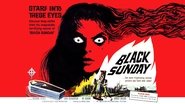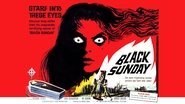Sameir Ali
Two centuries ago, two Satan worshipers (Princess Asa Vajda and her lover) are captured and crucified. But, the ritual fire was interrupted by an unexpected rain. She challenges to wipe out the entire family of her brother who did this. After two centuries, she wakes up and wanted to regain her life through her exact replica, Katia Vajda.Some of the effects in the film was really unbelievable. It's hard to think how they pulled out those effects in 1960.It's really a nice film for horror film lovers. #KiduMovie
sol-
Inadvertently brought back to life two centuries after she was crucified, a seventeenth century witch tries to avenge her death and possess the body of a near identical descendant in this Gothic horror film starring Barbara Steele. The film is directed by Mario Bava and making his solo feature film debut, Bava does well directing the material. His camera almost never sits still, the sets are appropriate eerie and the lighting choices are excellent, with many effective stark black and white images throughout. This is especially true of the unsettling opening scene with point-of-view camera-work as a mask with spikes on the inside is nailed into Steele's face. On the minus side, the opening is easily the most horrific and memorable sequence in the film, with the rest of the film gradually losing momentum. The film also features too many dialogue-heavy scenes for its own good and the plot is overly complex with vampires as well as witches thrown into the mix. Flawed though 'Black Sunday' may be as a narrative, it is never less than an absolute triumph of atmosphere and style, and the film is worth watching for the imagery (and spooky sound effects) alone. Bava even manages to make the smallest of moments atmospheric through subtle techniques like using a tracking shot from the back of a carriage. Some regard this as Bava's finest film achievement. That might not be true, but the reputation is understandable.
gavin6942
A vengeful witch (Barbara Steele) and her fiendish servant return from the grave and begin a bloody campaign to possess the body of the witch's beautiful look-alike descendant (also Barbara Steele). Only the girl's brother and a handsome doctor stand in her way.For many years I kept putting off seeing this because I was not sure if i had seen it or not, getting it confused with "Black Sabbath" (which it really has nothing in common with). Now I have seen the Kino version that is on Netflix. From what I understand, there are two English versions and an Italian one. I am not sure which one of the English ones this is (though the dubbing is funny given that Steele does not speak Italian).Anyway, beautiful film with some good black and white photography. I definitely need to see it again in its various versions before really making any serious comments.
Edgar Soberon Torchia
When "La maschera del demonio" was released in 1960, cinemas displayed a warning to those who could be affected by its strong images, right from the first sequence when Asa, a Moldavian witch or noble ascent, is sentenced to death by the Inquisition, and the title mask is nailed to her smooth, peculiarly beautiful face, with big eyes, high cheekbones, and fleshy lips. Director Mario Bava, who for the first time was in complete control of a motion picture, was subtle and graphic at the same time, in this adaptation of Nikolai Gogol-s long tale "Viy". A reading of the source against a screening of the motion picture would reveal the resorts of film adaptations: for a more faithful version, one should see the Soviet film "Viy" (1967). But the writers of "La maschera del demonio" opted for distancing from the original, and the result was an autonomous product, that still had potent echoes of Gogol's story, illustrated by two examples: one, the ominous vacation trip of the seminarists in the original, becomes the fateful journey of Dr. Kruvajan and his young assistant, Dr. Gorobec, key figures in Asa's resurrection; and two, Gogol's passage of a young novice who kills a witch in a cemetery, is reworked in three lines of action: a girl reluctantly milks a cow in a stable adjacent to the town's graveyard, where simultaneously Javutich (Asa's cousin, lover, and assistant) is raising from his grave, and not too far Dr. Kruvajan is picked up by a ghostly carriage to take him back to Asa's crypt. Moreover, the dead witch —who in "Viy" is first killed in the cemetery and later turns out to be a landowner's dead daughter— has accordingly a dual visual resonance: the face of witch Asa is the same as Katja's, daughter of one of Asa's relatives, both played by British actress Barbara Steele. Other resources and images are strictly Bava's: Asa's dead, wax-like visage, intact for centuries, except for empty eye-sockets; Katja's first appearance with a black mastiff, her languid expression as Asa vampirizes her with a touch, or the revelation of Asa's putrid body... Bava was also his own cinematographer (assisted by Ubaldo Terzano), excelling himself with striking, Gothic, black and white images; and the film was cut by classic film editor Mario Serandrei, who also contributed to the script. Roberto Nicolosi's score is effective in general terms, with the possible exception of the piano romantic theme, which sounds too contemporary for the visuals. (When the film was bought by American International Pictures for distribution in the United States, Les Baxter wrote a new score). Besides Steele (who was immediately crowned Queen of Horror) and British leading man John Richardson as Katja's suitor, Dr. Gorobec, three prestigious Italian character actors completed the main cast: Andrea Checchi as Dr. Kruvajan; Ivo Garrani as both the Inquisition leader and Katja's father; and Arturo Dominici as the tall, sinister and frightening Javutich. Although since the release of "La maschera del demonio" motion pictures have augmented explicitness and reduced suggestion, Bava's first film won a place in the history of cinema for giving new breath to the horror genre all over the world, in a time when it was overlooked by most film critics and audiences.







